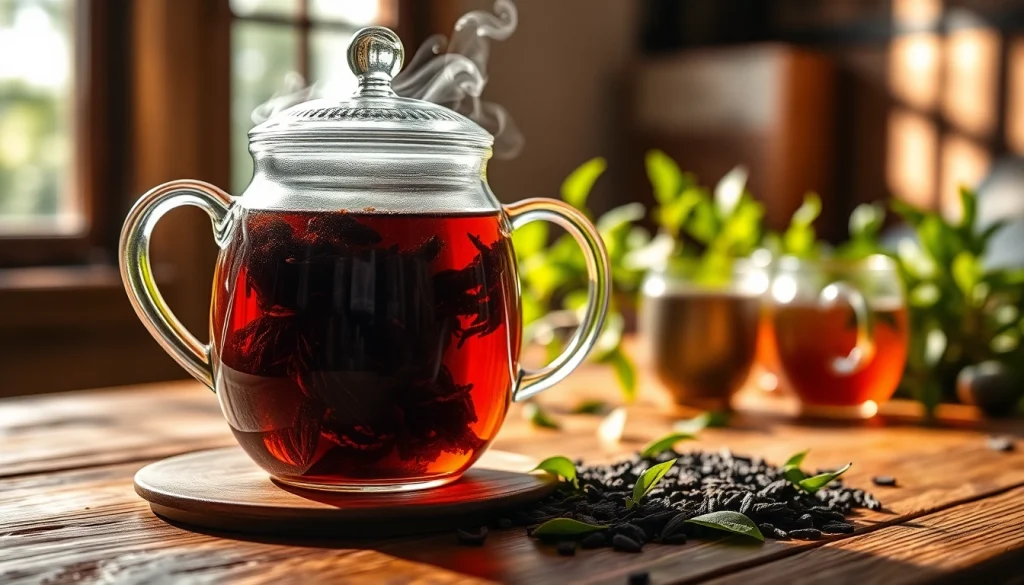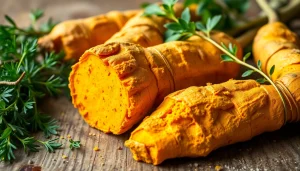Enhance Your Experience with Loose Leaf Black Tea: Benefits, Types, and Brewing Tips

Understanding Loose Leaf Black Tea
What is Loose Leaf Black Tea?
Loose leaf black tea is made from the leaves of the Camellia sinensis plant that are fully oxidized, giving the tea its dark color and robust flavor. Unlike tea bags, which often contain broken leaves and dust, loose leaf tea is comprised of whole, unbroken tea leaves. This allows for enhanced flavor extraction and a richer brew. Loose leaf black tea is celebrated for its versatility, as it can be enjoyed on its own, blended with herbs, fruits, or spices, and served hot or iced. Many tea enthusiasts believe that loose leaf black tea offers a superior experience compared to bagged varieties, as it retains more essential oils and is less processed.
Health Benefits of Loose Leaf Black Tea
Loose leaf black tea boasts numerous health benefits, attributed to its rich composition of antioxidants, polyphenols, and other vital nutrients. Here are some key health benefits:
- Rich in Antioxidants: Black tea contains antioxidants like theaflavins and thearubigins, which help combat oxidative stress and may reduce the risk of chronic diseases.
- Supports Heart Health: Regular consumption of black tea has been linked to lower cholesterol levels, improved blood vessel function, and a reduced risk of heart disease.
- Boosts Metabolism: The caffeine content in black tea can help increase metabolism and promote fat oxidation, making it a beneficial choice for weight management.
- Enhances Mental Alertness: The caffeine and L-theanine in black tea can enhance focus, alertness, and cognitive performance.
- May Improve Gut Health: Black tea is known to support gut microbiota diversity, which can enhance digestion and overall gut health.
Types of Loose Leaf Black Tea
There are several varieties of loose leaf black tea, each offering unique flavors and characteristics. Here are some popular types:
- Assam: Known for its robust, malty flavor, Assam tea is grown in India and often enjoyed with milk.
- Darjeeling: Often referred to as the “champagne of teas,” Darjeeling black tea has a delicate floral aroma and light, fruity taste.
- Nilgiri: Grown in the Nilgiri hills of India, this tea is fragrant, crisp, and well-balanced, often used in blends.
- Earl Grey: A traditional black tea infused with bergamot oil, Earl Grey offers a unique citrus note.
- Keemun: Originating from China, Keemun black tea has a rich and smooth flavor profile with hints of chocolate and fruit.
Brewing Loose Leaf Black Tea Perfectly
Essential Brewing Tools
To brew loose leaf black tea perfectly, you’ll need a few essential tools:
- Teapot or Infuser: A teapot with a built-in strainer or an infuser allows leaves to expand fully, ensuring optimal flavor extraction.
- Tea Scale: Measuring the correct amount of tea leaves is crucial for achieving the desired strength.
- Thermometer: To monitor water temperature and ensure that it’s suitable for brewing black tea.
- Tea Timer: Timing your brew will help prevent over-extraction, which can lead to bitterness.
- Filtered Water: Starting with clean, fresh water enhances the flavor of your tea.
Step-by-Step Brewing Process
Here’s a simple step-by-step guide to brewing loose leaf black tea:
- Boil Water: Bring filtered water to a rolling boil (around 200-212°F or 93-100°C).
- Measure Tea: Use about 1 teaspoon (2-3 grams) of loose leaf black tea for every 8 ounces of water.
- Steep: Pour the hot water over the tea leaves and steep for 3-5 minutes, depending on your taste preference.
- Strain: Remove the leaves using a strainer or infuser to avoid over-brewing.
- Enjoy: Serve your brewed tea plain or add milk, sugar, or lemon as desired.
Brewing Temperatures and Times
Each type of black tea may require slightly different brewing times and temperatures:
- Assam: Brew at 200-212°F (93-100°C) for 3-5 minutes.
- Darjeeling: Brew at 195-205°F (90-96°C) for 3-5 minutes.
- Nilgiri: Brew at 200-212°F (93-100°C) for 3-4 minutes.
- Earl Grey: Brew at 200-212°F (93-100°C) for 3-5 minutes.
- Keemun: Brew at 200-212°F (93-100°C) for 2-4 minutes.
Choosing the Right Loose Leaf Black Tea
Flavor Profiles in Loose Leaf Black Tea
The flavor profiles of loose leaf black tea can range from bold and robust to delicate and floral. Understanding these profiles can help you select a tea that suits your palate:
- Malty: Assam teas often exhibit a strong maltiness.
- Fruity: Darjeeling presents fruity notes alongside floral aromas.
- Citrus: Earl Grey infuses bright citrus notes into its blends.
- Rich: Keemun tends to have a rich, smooth texture with chocolate undertones.
- Earthy: Some Chinese black teas, like Lapsang Souchong, are known for their smoky, earthy flavors.
How to Identify Quality Loose Leaf Black Tea
When selecting loose leaf black tea, consider the following factors that indicate high quality:
- Leaf Appearance: High-quality leaves should be whole and uniform in size without broken pieces.
- Aroma: Fresh tea leaves should have a robust and fragrant aroma.
- Color: A rich, deep color is a sign of well-oxidized leaves.
- Origin: Premium teas often come from renowned growing regions like Assam, Darjeeling, or Fujian.
- Packaging: Quality teas are often packaged in airtight containers to preserve freshness.
Popular Varieties to Try
If you’re new to loose leaf black tea, here are some varieties to start with:
- English Breakfast: A classic blend, robust and hearty, perfect for morning consumption.
- Irish Breakfast: Even stronger than English Breakfast, often enjoyed with milk.
- Darjeeling: Offers delicate flavor, great for those who prefer lighter teas.
- Yunnan: Known for its rich, sweet flavor and subtle peppery notes.
- Chai: A spiced tea often brewed with milk and various spices, perfect for warming up.
Storing Loose Leaf Black Tea for Longevity
Best Practices for Storing Tea
To maintain the freshness and flavor of loose leaf black tea, it is essential to store it properly. Here are some best practices:
- Airtight Containers: Use opaque, airtight containers to keep out moisture and light.
- Cool, Dark Place: Store your tea away from direct sunlight and in a cool area, ideally at room temperature.
- Avoid Strong Odors: Keep tea away from spices and strong-smelling foods, as it can easily absorb odors.
- Don’t Refrigerate: Refrigeration can introduce humidity that damages the tea.
Signs of Expired Loose Leaf Black Tea
Loose leaf black tea can lose its flavor over time. Here are essential signs that your tea may have expired:
- Faded Aroma: If the tea no longer has a strong, pleasant scent, it may be stale.
- Loss of Flavor: A significant drop in taste intensity indicates the tea is likely past its prime.
- Discoloration: If the leaves appear dull or faded compared to fresh tea, it may be time to discard them.
- Unpleasant Smell: Any off-putting or musty odor is a sign that the tea has gone bad.
How to Revive Stale Tea
If your loose leaf black tea is stale, there are a few methods you can try to revive it:
- Enhance the Brew: Use a slightly higher quantity of tea leaves or steep for a minute longer.
- Mix with Fresh Tea: Blend stale tea with fresh varieties to enhance flavor.
- Infuse with Spices: Add spices or herbs to create flavored brews, masking the stale taste.
Incorporating Loose Leaf Black Tea into Your Lifestyle
Tea Pairings with Loose Leaf Black Tea
Loose leaf black tea is versatile and can be paired with a variety of foods:
- Breakfast Foods: Enjoy with savory breakfast dishes or pastries, such as muffins or scones.
- Cheese: Pair with tangy cheeses like aged cheddar or brie.
- Desserts: Complement with chocolate desserts or fruity tarts.
- Spicy Dishes: Strong black teas balance well with spicy Indian or Southeast Asian cuisine.
Creative Recipes Using Loose Leaf Black Tea
Here are some creative ways to incorporate loose leaf black tea into your recipes:
- Black Tea Ice Cream: Infuse cream with black tea leaves, then churn into delicious ice cream.
- Tea-Infused Cocktails: Create cocktails using brewed black tea as a base, combined with spirits like gin or whiskey.
- Chai Spiced Cookies: Incorporate steeped chai into cookie batter for a hint of spice.
- Tea-Infused Rice: Cook rice with brewed black tea for a unique flavor twist.
Benefits of a Daily Loose Leaf Black Tea Ritual
Establishing a daily loose leaf black tea ritual can provide numerous benefits:
- Mindfulness: Taking the time to brew tea helps cultivate mindfulness and appreciation for the moment.
- Health Routine: Drinking tea daily can contribute to better health through antioxidants and hydration.
- Community: Sharing a pot of tea with friends or family fosters connections and conversations.
- Routine: Incorporating tea into your daily routine can create a sense of stability and pleasure during the day.







